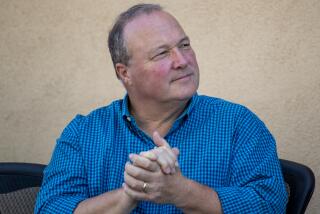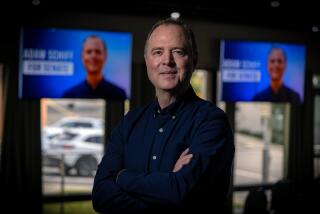Fight Against Drugs Needs Everybody : Abuse: The problem won’t be solved until the people simply refuse to take it anymore.
During my tenure as the chairman of the California Senate Select Committee on substance abuse, we have seen dozens of legislative proposals addressing the myriad problems associated with the tragedies of drug and alcohol abuse.
While I believe that the efforts of the select committee have heightened the awareness and sensitivity of legislators and residents to this crisis, our efforts are only one small part of the war to rid California of its greatest enemy--substance abuse.
The state Department of Alcohol and Drug Programs estimates that there are 2.1 million problem drug users in California. In 1989, more than 300,000 people were arrested for drug-related offenses and more than 550,000 individuals were arrested for alcohol-related crimes. These bookings accounted for more than 36% of all arrests, and drug offenders accounted for nearly 25% of our total prison population.
Hidden in all these statistics are the real consequences and tragedies that substance abuse brings not only to individuals, but to society as a whole.
In 1989, there were 41,000 alcohol-related accidents, in which 63,000 people were injured and 2,500 killed. Drunk drivers are not the only result of too much booze. Approximately 30% of all suicides and 50% of all homicides are committed under the influence of alcohol.
Perhaps the greatest tragedy of all is the effect that substance abuse has upon our newborn babies. Approximately 15% of all infants born in California have been exposed to illicit drugs. It is estimated that 50% of babies born to women who drink heavily will have alcohol-related birth defects, and the figures are growing.
The annual cost of all this human misery is enormous--nearly $18 billion. That’s about $700 a year for every man, woman and child in the state.
To have half a chance at winning this war, we have to wage three separate battles. The first line of defense would have to be law enforcement, flanked by increased drug and alcohol treatment programs and, most important, attacking the problem before it ever gets started, concentrating on education and prevention.
Recently, the Senate Select Committee on Substance Abuse held two hearings to review the five-year statewide master plan to reduce drug and alcohol abuse. This battle plan, enacted in 1988, created goals for various state departments, local government, schools and community groups in the effort to halt the spread of drug and alcohol abuse.
County and local law enforcement agencies reported an increase in arrests for drug-related offenses and a decline in the number of deaths attributed to illicit drugs. Additionally, by working effectively with federal law enforcement there has been greater success in discovering large caches of illegal drugs. Nevertheless, law enforcement reports that the supply of drugs continues to be overwhelming, and there is no evidence that we are winning the war against gang-drug-related violence.
For the millions who are already hooked, we must provide treatment programs. But the hearings clearly pointed out that we sorely lack the ability to treat even those who really desire it. In some instances, there is a three-month waiting period at treatment facilities. Treatment programs for drug-addicted moms who want their babies born clean are virtually nonexistent. We must do better.
As Orange County Sheriff Brad Gates said, “Anti-drug education is the key to stopping drug abuse.” The “Just Say No” and “Drug Use Is Life Abuse” programs appear to have some impact on our young people. A number of recent studies indicate that drug use among the school-age population is declining. Further, there is evidence that many students have moved beyond the slogans to a realization that using drugs can indeed “Fry Your Brain.” Orange County has been particularly successful on the educational front. We must take that success and encourage every county to follow its lead.
There is a fourth battle which must be waged. We can educate, we can treat, and we can lock people up. But until residents stand up and say “I’m mad as hell, and I’m not going to take it any more,” we may end up like Moses, spending 40 years wandering in the desert.
The battle we must wage will have to be block by block, neighborhood by neighborhood. It will take a cooperative effort by law enforcement, the coalition of churches, education, social agencies, and job programs working with the residents to achieve a society void of substance abuse. But it’s got to begin with our people, and it must begin now.
Sen. John Seymour (R-Calif.) was sworn into office Thursday. This was written when he was chairman of the California Senate Select Committee on Substance Abuse.


